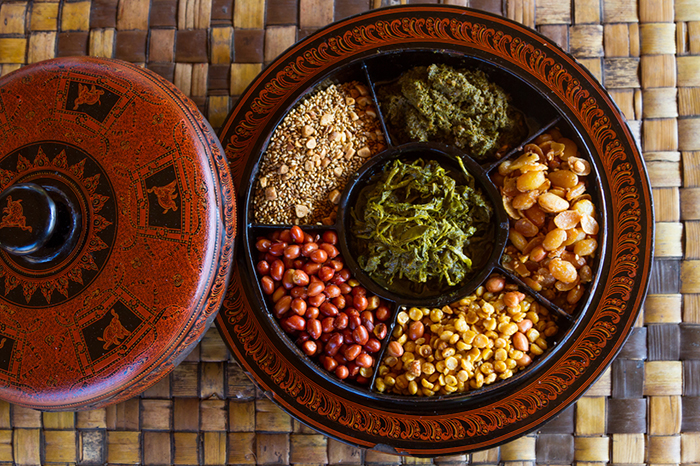
Tea makes Myanmar tick, and it’s been that way for a long, long time. The country has a culture of tea drinking that is very much its own, and has been shaped and reshaped by its history. From a stopover on an ancient trading route, through numerous kingdoms, up to colonial rule, and into the present day, Myanmar has formed a special relationship with the leaves which are drunk daily by millions, and even eaten in lahpet thoke – a delicious salad of fermented tea leaves.
Every year more and more people are exploring Myanmar, and the country’s tourism and hospitality industry is growing quickly. Luxury hotels are going up at an incredible rate, new opportunities for adventure travel are opening, and nearly everything about the country is making it more accessible to travelers of all types. We are often asked by visiting friends for travel recommendations, and we have plenty to give: Riding the Yangon Circle Line railway, hot air balloon rides over the plains of Bagan, U-Bein bridge near Mandalay, The cool climate of the former British Hill Station at Pyin Oo Lwin, and more. But there’s also one simple pleasure we recommend, and that’s a visit to a tea shop.
Tea shops are everywhere here, and they are an important part of communal life. They are open all day, but are busiest with the breakfast crowd fueling themselves for the day ahead. Plain tea is self-serve from a thermos on each table, and those looking for an extra boost order a glass sweetened with sugar and condensed milk. These can get quite sweet, but when done right are delicious. A local with a few hours to kill can be seen happily sipping away, reading a newspaper, and smoking the loose cigarettes sold in all tea shops here. And of course, eating.
Caffeine is all well and good, but it’s the tea shop breakfast that powers Myanmar’s workers. A variety of curries, noodle dishes and sides can be ordered, including the ubiquitous mohinga, a fish and rice noodle soup that is the national dish. And then there are the snacks: sweet and savory fried pastries often reminiscent of Indian foods like samosa and puri, and Chinese-style steamed buns are brought to every table. The number of missing ones are simply added to the bill at the end of the meal. Myanmar breakfast in the best shops is absolutely delicious.
Visiting a tea shop here is an authentic cultural experience, and it’s even more enriching because of the incredible history behind it. Tea has been drunk for over ten millennia. It is believed to have originated in Yunnan in Southern China, and due to its close proximity to Myanmar’s Shan state, it’s likely that consumption spread to here first. The Shan highlands encompass Northeastern Myanmar, and parts of Thailand, Laos, and China as well. In the higher altitude areas such as Yunnan and the Shan Valley in Myanmar, the cool, wet climate is perfect for growing premium teas, and the best varieties from Northern Myanmar are world-renowned.
Tea spread throughout Asia over various trade routes, and one of the most famous passed through Myanmar. The Ancient Tea Horse Road conveyed dried bricks of the leaves to Assam and Bengal in India, and importantly to Tibet where they were exchanged for the horses that were integral to Chinese expansion and their wars against nomadic tribes to their north. Salt was the other important commodity traded along the road. Myanmar’s location between China and India has always made the country strategically important, and we’re seeing a resurgence of that today.
Under British rule in the 19th and 20th Centuries, Burma as it was then known underwent a process of urbanization as new jobs were created to service the colonial economy. These workers in unfamiliar settings needed a place to eat, drink, and gather, and they found it in the age-old drink. Tea had already become immensely popular in Europe, and the British brought their teashop culture to the country which they administered as a part of British India. Of course the drink had always had a social ritual involved in Myanmar, but took on a European twist at that time.
Myanmar is rapidly changing, growing, and opening up to the world economically and culturally. This is not so much something new, as it is a new manifestation of an old pattern. The country has always been important to international trade and has adapted to the changing world around it. The tea culture is similar. Anchored in ancient tradition and modified to fit the necessities of circumstance, today it finds itself as one of the pillars of community life. One of the best activities for Travelers in Myanmar is to find a tea shop, grab a copy of George Orwell’s ‘Burmese Days’, and spend an afternoon reading, people watching, and dunking bits of fried dough into sweet, milky tea.
